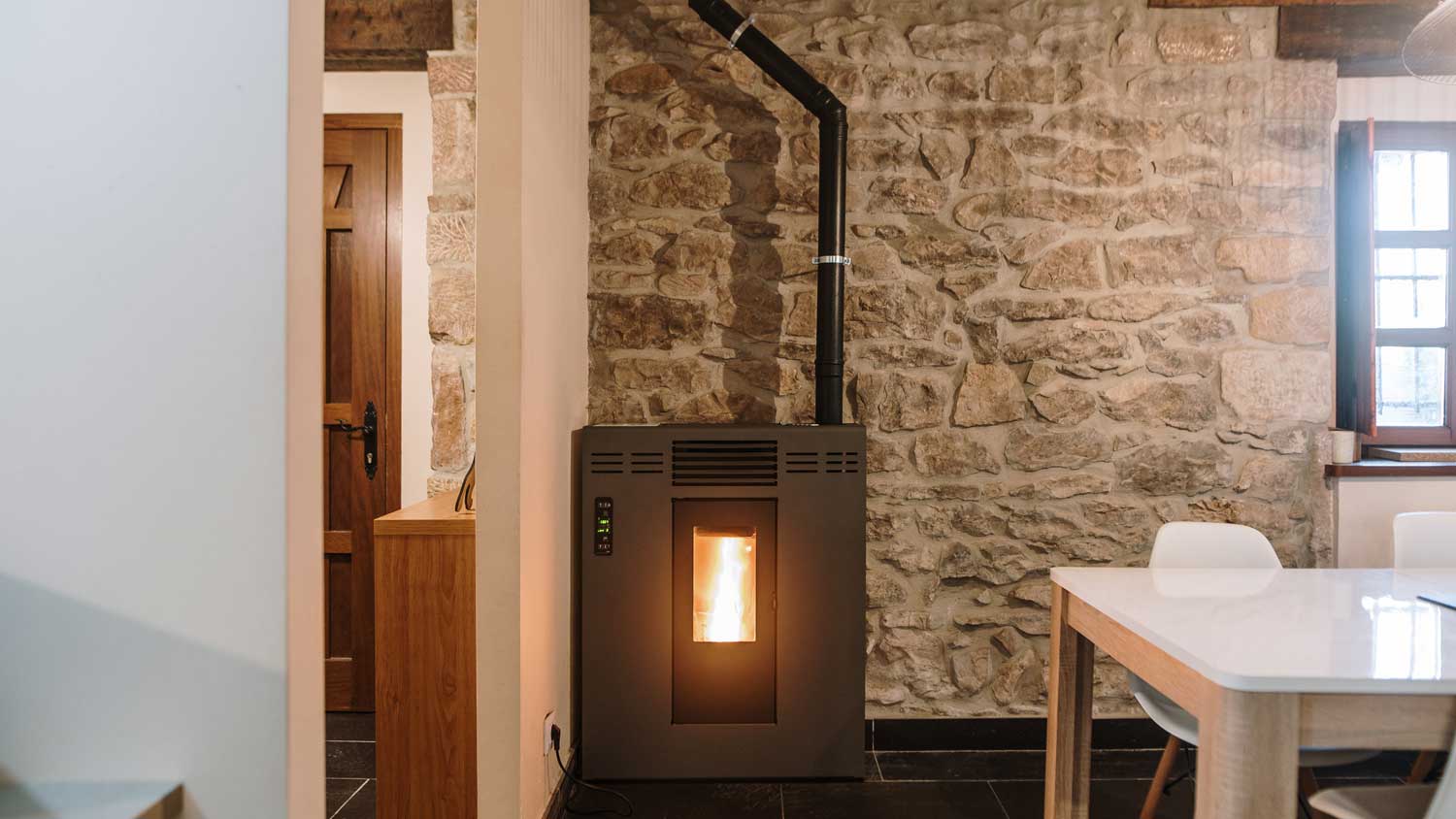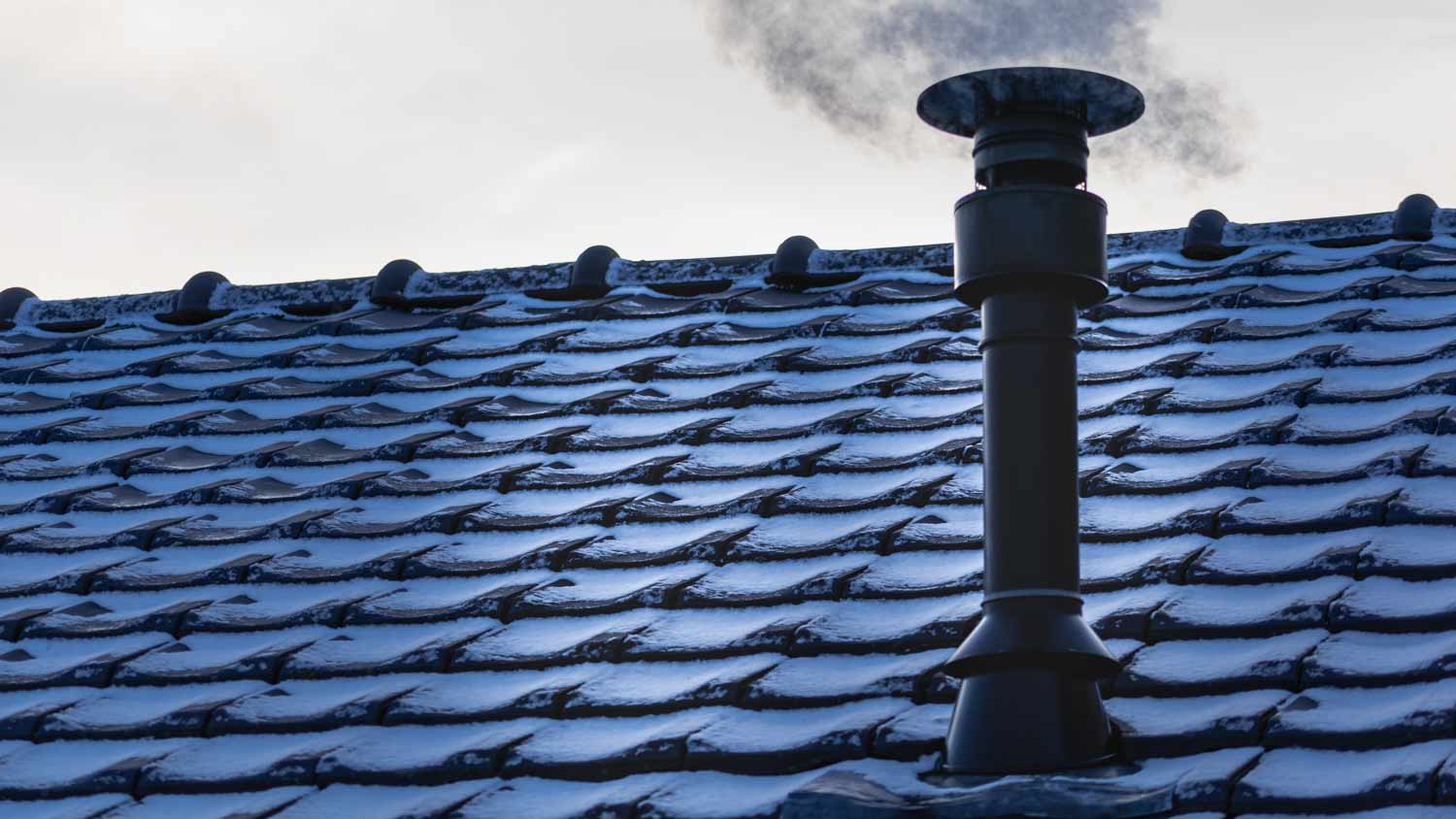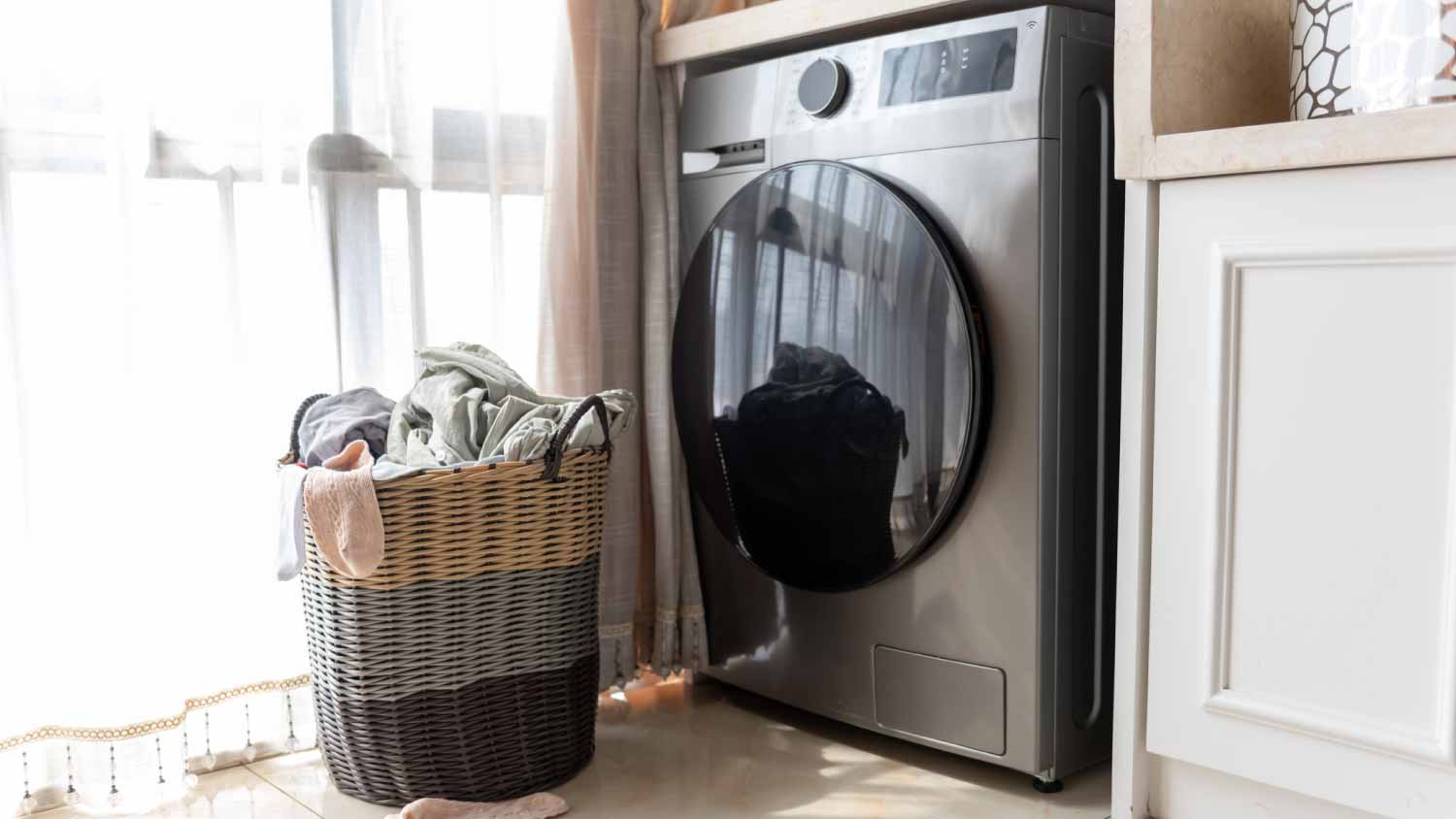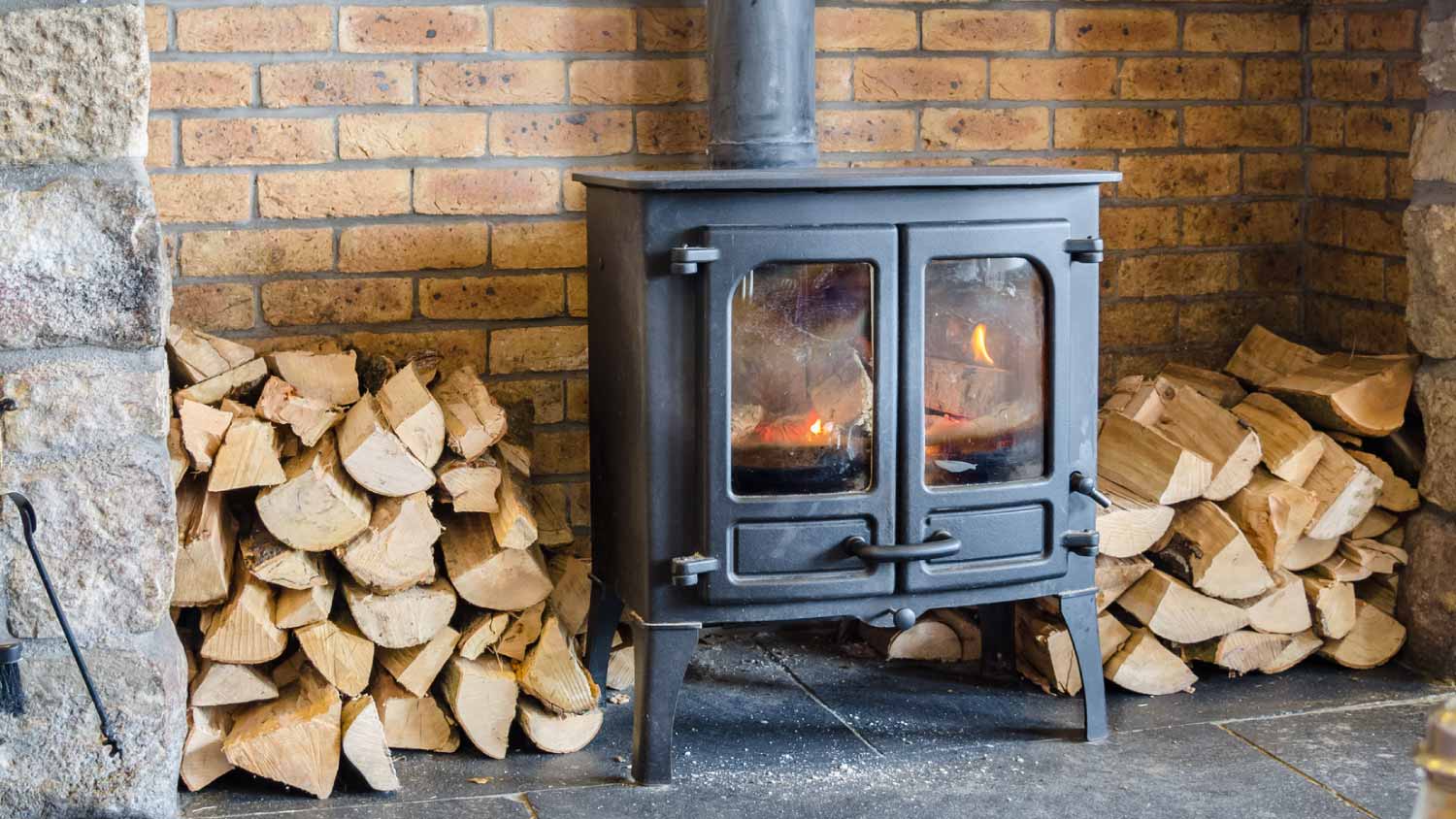Do Pellet Stoves Need a Chimney?
Short answer: No—but they do need to be vented


Pellet stoves don’t require a chimney, but they require ventilation.
If you don’t have an existing chimney, you must install a pellet stove flue.
Pellet stoves are more affordable to install than traditional fireplaces—$2,300 on average.
If you’re burning wood, always use a carbon monoxide detector.
There’s nothing quite like a wood-burning fire to add warmth to your home. If you don’t have a fireplace, a pellet stove can be an efficient and affordable way to achieve that cozy feeling while heating your home. Pellet stoves don’t need a chimney, but they do require ventilation. Fortunately, retrofitting your home for one of these devices is relatively simple and affordable—we’ll dive into all the details below.
What Is a Pellet Stove?

A pellet stove is a modern heating source that uses compressed wood pellets as fuel. These stoves combine old-school ambiance with newer technology that keeps the fire at a consistent strength and temperature without requiring many adjustments.
Better yet, the pellets are generally made of recycled wood, which means they are a green and sustainable way to heat your home. The fuel comes from reused materials, and the automation ensures maximum efficiency. In short, they’re as earth-friendly as they are cozy.
Do You Need a Chimney for a Pellet Stove?
No, pellet stoves don’t require a chimney—so if you live in a house without a traditional fireplace, you’re in luck. However, pellet stove fires (like all wood fires) produce hazardous gases like carbon monoxide, so you need a vent to take that exhaust outside your home.
If you do happen to have a chimney, you can certainly vent your pellet stove that way. The pellet stove vent pipe will need to be attached to a chimney liner, which can then carry its smoke up, up, and away. Anyone who doesn’t have a chimney must install a pellet stove flue instead.
How to Vent a Pellet Stove Without a Chimney

You can still enjoy the steady heat and cozy atmosphere of your pellet stove by installing a pellet stove flue—a metal pipe attached to your pellet stove that vents its smoke outside your home. Pellet stove flues are generally made of insulated stainless steel and connected directly to your stove on one end and to the outside of your home on the other. The exhaust vent side may come out of the side of your home or through the roof, much like a chimney would.
Vertical vs. Horizontal Pellet Stove Flues
Vertical pellet stove flues vent out through your roof, while horizontal pellet stove flues vent through the wall. A vertical installation allows you to place the pellet stove almost anywhere in your home, whereas a horizontal flue means your stove must be close to an outside wall.
Internal vs. External Pellet Stove Flues
Internal pellet stove flues run through the inside of your home, usually straight up through the ceiling and out the roof. An external pellet stove flue is connected to your stove, but the flue exits your home quickly. There, it runs up the side of your house to expel the pellet stove exhaust away from outdoor living areas. You may have a horizontal pellet stove flue that runs from the stove to the wall—and then a vertical, external pellet stove flue that runs up the exterior wall to vent near the roof.
Internal flues are warmer, which may make your stove easier to light, though they take up more space and are more visible inside your home. External flues may leave your living area looking less cluttered but can be costlier if more “elbows” are required to redirect the smoke.
Chimney vs. Direct Venting for Pellet Stoves
Direct venting can be more cost-effective than a chimney for a pellet stove, but it’s not always the right option, depending on your particular set-up as well as local regulations.
Chimney Venting
A pellet stove doesn’t necessarily need a chimney, however, if you live in an older home, where a direct vent is more difficult to install if you don’t have access to vent the stove safely on your exterior wall, or if you live in a place where local regulations require a chimney, you’ll need to choose a chimney rather than a direct vent.
Direct Venting
You can choose to go with direct venting for your pellet stove if you live in a modern home with clearance to vent to the outside and if local regulations allow for a direct vent system. If you live in an older home where it’s more difficult to install a direct vent through the wall, you’ll need to use a chimney to vent your pellet stove.
Cost to Install a Pellet Stove Flue
Installing a pellet stove, including ventilation, is far more affordable than installing a traditional fireplace and chimney. Pellet stove installation costs $2,300 on average, whereas fireplaces and chimneys can cost closer to $11,000.
If your home isn’t already retrofitted with appropriate ventilation, installing a pellet stove flue is a job best left to professionals. Since venting harmful exhaust is a matter of life or death, the many building codes and regulations around these installations may vary from place to place.
Fortunately, your local wood stove company will be happy to help you determine the right flue setup for your pellet stove—so you can put your feet up and enjoy the cozy vibes stress-free.
Safety Considerations for Pellet Stove Ventilation
Even with proper ventilation, you should install a carbon monoxide detector. Carbon monoxide is an odorless, flavorless, colorless, and therefore undetectable gas. Exposure to carbon monoxide can cause permanent brain damage and death. Fortunately, carbon monoxide detectors are readily and cheaply available.
It’s also important to regularly clean and maintain your pellet stove to ensure it’s up to prime operational condition. You’ll want to regularly sweep ashes out of the burn chamber and ash catchment pan and scrape the burn pot. At least once per year, it’s also a good idea to perform a deep cleaning of your pellet stove in accordance with the owner’s manual. Along with keeping your pellet stove in fighting shape for years to come (and ensuring efficiency stays up to snuff), keeping your stove clean can help reduce the risk of exhaust backup into your home.
Frequently Asked Questions
No, there are no ventless pellet stoves. Because pellet stoves burn wood pellets, they produce wood smoke—which contains carbon monoxide. This harmful substance needs to be vented out of your living area. That said, there are vent-free and ventless fireplaces that run on natural gas and propane. These offer the heating and ambiance of a fireplace without the need to vent thick and hazardous wood smoke.
A 40-pound bag of wood pellets can provide a solid 24 hours or so of burn time, though the exact length may vary. If you’re using your pellet stove as an exclusive heat source during the winter, you’ll need an estimated 100 to 150 of those 40-pound bags, depending on how hot you like to keep your home, its size, the climate, and other factors.
Although they provide heat, light, and atmosphere, pellet stoves require electricity to run certain parts, which some homeowners may find to be an unfortunate additional expense. They can also produce noises that some may find annoying, like a low rumble from the blower fan or its motor.
Most pellet stoves last at least 10 years, depending on use and proper pellet stove maintenance. A pellet stove that’s very well taken care of may last closer to 15 or 20 years, making it a worthwhile investment even for homeowners who plan to stay in and heat their homes with the stove for quite a long time.



.jpg?impolicy=leadImage)

- Appliance Repair Companies
- Washing Machine Repair
- Dryer Repair
- Refrigerator Repair
- Dishwasher Repair
- Oven Repair
- Wood & Pellet Stove Repair
- Freezer Repair Services
- Wood Stove Services
- Gas Stove Repair
- Emergency Appliance Repair Companies
- Ice Maker Repair
- Gas Appliance Repair
- GE Appliance Repair
- GE Refrigerator Repair
- GE Dryer Repair
- GE Dishwasher Repair
- GE Washing Machine Repair
- Samsung Appliance Repair
- Samsung Refrigerator Repair
- Samsung Dryer Repair
- Samsung Washer Repair
- Samsung Dishwasher Repair
- Samsung Oven Repair
- Whirlpool Repair
- Whirlpool Refrigerator Repair
- Whirlpool Washer Repair
- Whirlpool Dryer Repair
- Whirlpool Oven Repair
- Maytag Appliance Repair
- Maytag Refrigerator Repair
- Maytag Washer Repair
- Maytag Dryer Repair
- Maytag Dishwasher Repair
- Kitchenaid Appliance Repair
- Kitchenaid Oven Repair
- Kitchenaid Refrigerator Repair
- Kenmore Appliance Repair
- Kenmore Dishwasher Repair
- Kenmore Washer Repair
- Kenmore Dryer Repair
- LG Refrigerator Repair
- Bosch Appliance Repair
- Kenmore Refrigerator Repair
- LG Appliance Repair Services
- GE Microwave Repair
- Electrolux Appliance Repair
- Electrolux Washer Repair
- Kitchenaid Dishwasher Repair Services
- Wood Stove Inspection
- Dishwasher Installation
- Trash Compactor Repair
- Pellet Stove Installation: Who to Hire to Heat Up Your Home
- How to Install a Pellet Stove: Freestanding, Wall-Mounted, and Insert
- Are Pellet Stoves Safe? Yes, If You Follow These Steps
- What Is a Pellet Stove? Your Ultimate Guide to Efficient Home Heating
- Pellet Stove vs. Wood Stove: What’s the Difference?
- Troubleshooting 10 Common Pellet Stove Problems
- 9 Reasons Your Pellet Stove Is Not Igniting
- Pellet Stove vs. Propane Fireplace: What’s the Better Heating Option for Your Home?
- Everything You Need to Know About the Different Parts of a Pellet Stove
- 6 Pellet Stove Maintenance Tips That Will Save You Money on Repairs










